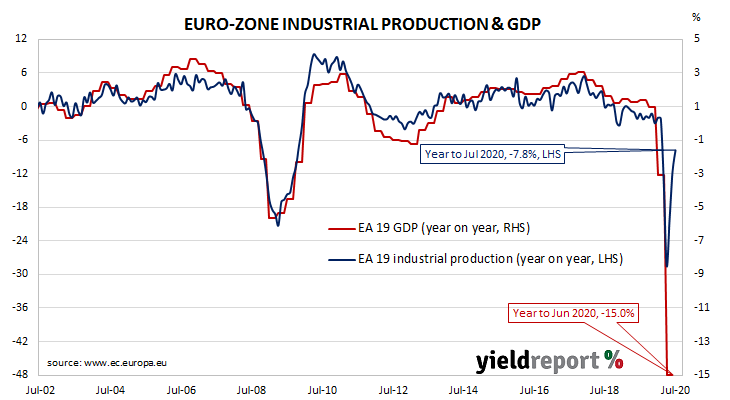Summary: Euro-zone industrial production continues recovery after huge falls in March, April; monthly figure more than consensus estimate; annual rate still very negative; German and French economies grow at less than overall rate.
Following a recession in 2009/2010 and the debt-crisis of 2010-2012 which flowed from it, euro-zone industrial production recovered and then reached a peak four years later in early-2016. Growth rates then fell and recovered through 2016/2017 before beginning a steady and persistent slowdown from the start of 2018. That decline was transformed into a plunge in March and April but the following months have produced an almost equally steep bounce.
According to the latest figures released by Eurostat, euro-zone industrial production expanded on a seasonally-adjusted basis by 4.1% in July. The increase was greater than the 2.7% increase which had been generally expected but substantially less than June’s revised figure of 9.5%. On an annual basis, the seasonally-adjusted growth rate increased from June’s revised rate of -11.6% to -7.8%*.

German and French 10-year bond yields hardly moved on the day. By the close of business, the German 10 year bund yield was unchanged at -0.48% while the French 10-year OAT yield had slipped 1bp to -0.19%.
Industrial production continued to recover across all four of the largest euro-zone economies, although Germany’s increase was somewhat of a laggard. Germany’s production expanded by 2.4% in July while the comparable figures for France, Spain and Italy were 3.8%, 7.4% and 9.4% respectively.
ANZ senior economist Felicity Emmett made an interesting observation. “The degree of divergence from pre-crisis readings across economies varies. In Germany, July production was 11.3% below February levels, in Italy it was 6.6% below and France was 7.2% below.”

